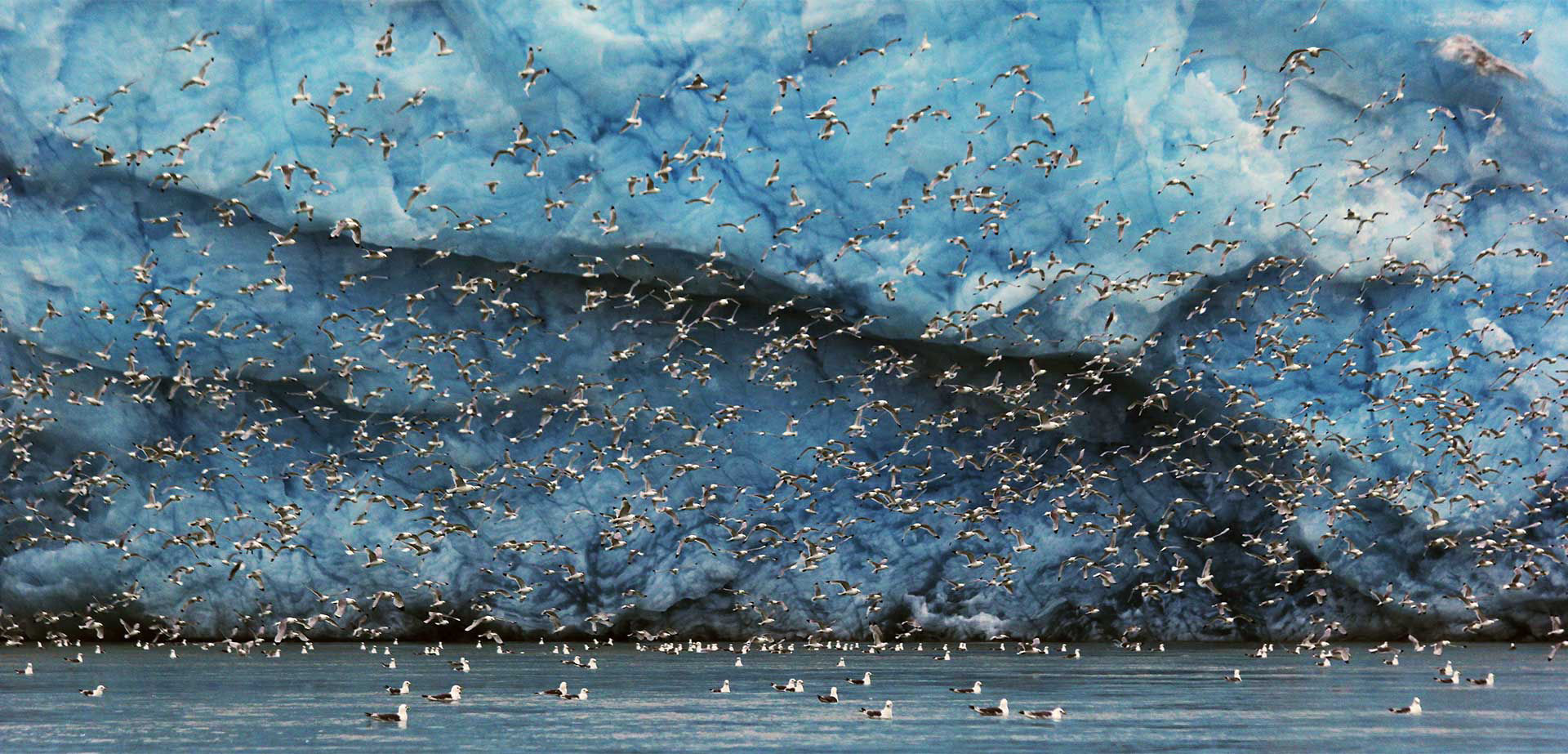
2013年,夏天來到北極的腳步比往常都早。
7月30日上午,在冷岸群島北部的摩納哥冰川(北緯79°30東經12°29),數以萬計的三趾鷗正在享受一場超級豪華盛宴。
盛夏季節,巨型的冰塊接連不斷地從冰川前緣崩塌下來,晝夜不停。
幾乎每一次冰崩,都能產生強大的渦流,深水中的魚群及浮游生物,被這些渦流帶到上層水體,成為三趾鷗們爭相捕食的獵物。
群鷗的彌集,表面上是因為冰塌頻繁,使得表層水體餌料豐富,然究其根本,是因全球氣候變化的加劇,使得北極冰川融化速度越來越快,導致冰川前緣發生如此頻繁的崩塌。
因此,群鷗彌集所反映出的,是地球氣候變化的一個縮影。極地,是觀察地球變化的視窗,關注極地的每一個細節,是為了認識和瞭解地球環境,從而知道人類該如何保護並適應變化。
In 2013, I traveled to the North Pole in
summer, which was earlier than usual. On
the morning of July 30, I saw thousands of
black-legged kittiwakes foraging along the
Monaco Glacier in the Svalbard archipelago
(79°30 north latitude, 12°29 east longitude).
At the height of summer, large blocks of ice
fall from the front margin of the glacier night
and day. Almost every time this glacier
calves, strong eddies are formed. Deep
water fish and plankton are brought to the
surface by these eddies, becoming food for
these birds. Due to global climate change,
Arctic glaciers are melting at a faster rate,
increasing the frequency of calving along
the front margins. This large group of birds
reflects this phenomenon. The polar regions
are a window onto global change. By
observing the polar regions in detail, we
can understand the global environment and
how to protect it, as well as how to adapt to
changes.
展示地點
第二特展室
展示時間
2019.07.13 - 2020.02.16
© 國立自然科學博物館版權所有